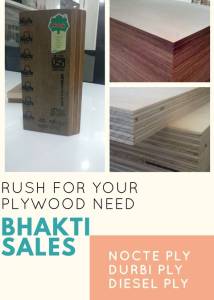Description
Plywood: Versatile Strength for Every Project
Plywood, a staple in construction and crafting, offers unparalleled strength and versatility for a wide range of applications. Manufactured from thin layers of wood veneer glued together with the grains running perpendicularly, plywood exhibits exceptional stability and resists warping and shrinking far better than solid wood. This makes it an ideal choice for projects demanding both durability and dimensional accuracy.
Key Features and Benefits:
- Exceptional Strength-to-Weight Ratio: Plywood provides superior strength relative to its weight, making it easy to handle and transport while maintaining structural integrity. This is crucial for applications requiring lightweight yet robust materials.
- Dimensional Stability: The cross-grain layering significantly reduces the impact of humidity changes, preventing warping, shrinking, and expansion – crucial for projects exposed to fluctuating environmental conditions.
- Versatility: Plywood is available in a variety of species, grades, thicknesses, and sizes, allowing for customization to suit diverse projects, from furniture building and cabinetry to flooring and construction.
- Workability: Plywood is relatively easy to cut, shape, and finish, making it accessible to both experienced professionals and DIY enthusiasts. It accepts paint, stain, and veneer exceptionally well.
- Cost-Effective: Compared to solid wood, plywood often offers a more economical solution, especially for larger projects.
- Sustainability: Many plywood manufacturers utilize sustainably sourced wood, contributing to responsible forestry practices.
Types of Plywood:
Plywood is categorized by several factors, including:
- Wood Veneer: Common species include Birch, Oak, Maple, Pine, and more. Each species offers unique aesthetic and performance characteristics. Birch plywood is known for its strength and smooth surface, while Pine plywood offers affordability.
- Grade: Grades (e.g., A, B, C) indicate the quality of the face and back veneers. Higher grades have fewer knots and imperfections, resulting in a smoother surface ideal for visible applications.
- Thickness: Plywood is available in various thicknesses, typically ranging from 1/4" to 1 1/2" or more, depending on intended use. Thicker plywood offers greater strength and stiffness.
- Core Construction: The core layers can vary in composition, affecting overall performance. Some common types include solid core, hardwood plywood core, and more.
Applications:
Plywood's versatility shines in a broad range of applications, including:
- Furniture Making: Cabinets, shelves, tables, chairs, and more.
- Construction: Subflooring, sheathing, wall panels, and roofing.
- Cabinetry: Custom cabinetry for kitchens, bathrooms, and other spaces.
- Crafting: Model building, signs, artwork, and other creative projects.
- Renovations: Repairing and upgrading existing structures.
- Flooring: Subflooring and underlayment for various flooring types.
Choosing the Right Plywood:
Selecting the appropriate plywood requires considering the project's specific needs, including the desired strength, aesthetic appearance, and budget. Consult with a lumber specialist or review manufacturer specifications to ensure you select the optimal plywood for your project.
Note: Always follow proper safety precautions when handling and working with plywood. Use appropriate personal protective equipment (PPE), such as safety glasses and gloves.
